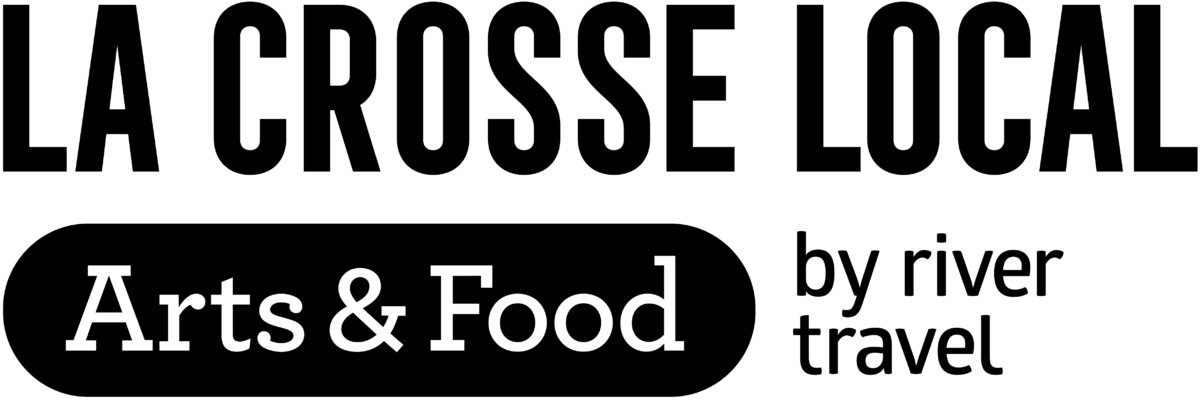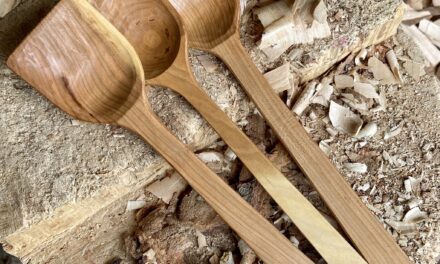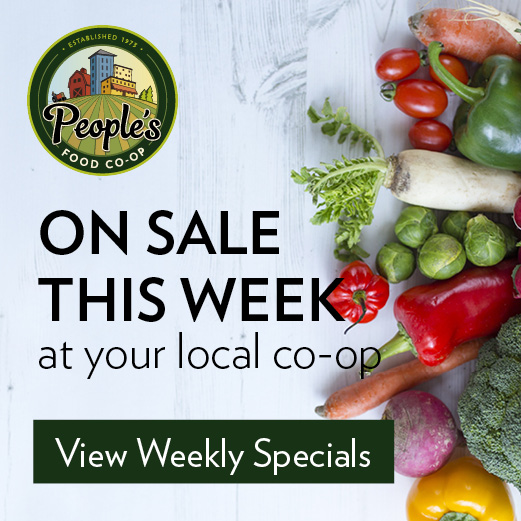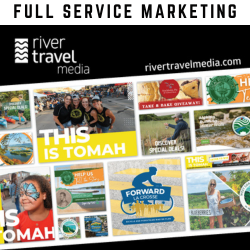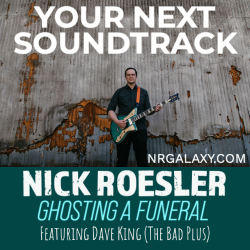It is going to be this flowing river, that goes diagonally up the wall, about 8ft high off the ground…it will have glass, tile, wood, but the focal point is a huge wingspan of a heron…
On this episode, we talked with artist Stacia Goodman, we talked about large scale mosaics, her approach to public art, and on being selected by the La Crosse Arts Board to create a work for the newly renovated La Crosse Center.
Transcript
So I’m Stacia Goodman, of Stacia Goodman Mosaics. And I was born in southern Minnesota in Northfield, that’s where my parents were from. But when I was about three, my parents split up and I moved with my mom and her guy, who would become my stepdad. We moved to rural northern Minnesota to a tiny town called Kettle River that had about 150 people in one of the poorest counties in the state. So it was, that was my upbringing in a trailer house in northern Minnesota in the woods.
Brent Hanifl 01:08
What turned you on to art, like, what was the process? Was that an early thing or did it you kind of jump into it later in life?
Stacia Goodman 01:14
You know, I think for a lot of artists, I still struggle with that word artist a little bit because I have no formal arts training. I think of myself as being creative and having a wonderful imagination, I think more than calling myself an artist. And I think that my art that I make today grew out of just being from the womb really curious. And being a creative, imaginative maker, sort of kid who didn’t even know that the word artist or art existed, I had no access to the arts. I didn’t go to a museum until I was into my 20s for sure. But I was always gathering stuff, making stuff. Just a quick story. I remember as a young kid, my mom worked as a secretary at a lumberyard. And all I wanted for my birthday that year was this little saw that had a blue handle. And I just wanted the saw. And when I got the saw, I was so excited. And I went into the woods in the back of our house and started cutting down all these little birch tree saplings and made myself a tree house, you know, with just nails in that little. So it was just there really, really young, just wanting to make stuff with my hands very tactile.
Brent Hanifl 02:37
So working in the field of mosaics, who are some of your influences. I mean, it could be other artists or they I mean, it could be music, for all we’re interested in what, what are some of your influences when creating this?
Stacia Goodman 02:48
Well, you know, I could throw out a bunch of names of mosaic artists, but I don’t think it would necessarily resonate with people. And actually, I don’t like to study other mosaic art because I don’t want it to influence necessarily what I’m doing. So my biggest influences are, first and foremost, always has been nature because of growing up, I say in the woods, in the water of northern Minnesota. And to this day, too, I am always outside. I’m in my kayak, I’m skiing, I’m running, I’m biking, I’m doing open water swims, I am just of that dope. And then architecture and textile patterns. I’m really a pattern artist is how I think of myself. So any kinds of patterns in nature, in architecture. On my Instagram account, half of my Instagram account is my mosaic art and the other half is just these patterns that I create, because I love patterns. And then music for sure. I mean, I don’t know where I would be without Spotify. I love love, love music. I love NPR, Tiny Desk concerts to find new music, I love live music, and of all genres. I’m actually a big fan of rap and hip hop. Today as I was writing, I was listening to Ray, old Ray Charles, I was listening to Cardi B. You know, it just is this huge range of music that I’m really influenced by and I think of all of this kind of spoken word and then with really great beats in there. And it’s like, I love it. So those are my biggest influences. And then I just have a crazy noodle brain that’s always seeing things, you know.
Brent Hanifl 04:30
How do you approach a public art piece? You know, when you come into a community? How does it all start?
Stacia Goodman 04:35
I like to tell people that being a public artist comes with a very great responsibility. I see it that way. And there are a lot of best practices in public art. It’s not about just oh, I want to create this thing for my portfolio that I want to put up on this wall or in this space. Every public art project that I go toward always begins with really deep research, really deep research about place, about culture, history community. And when I say history, it’s really going far back, I’m going back to who are these lands initially, the people who this is the ancestral land of these people, and it’s not white people. It’s that’s from colonialism and all sorts of things. And so it’s really going very, very far back and looking at history and not just like the good fluffy stuff, it’s looking at the difficult stuff and the painful things that have happened, the people who have been marginalized and wounded and carry those wounds to this day. And I approach that public art, by the design process with all of that knowledge, as well as how can we engage community in this process, because the tagline I have for Stasia Goodman Mosaics is capture the story of your space. So I think of myself as really just the conduit of the story that we want to shine a spotlight on and tell through the artwork. So it is not just about making a mosaic in the space and plopping it down and then being done with it. It’s very much of a relationship with the commissioning body, the community. And oftentimes that relationship can continue after I’m done making the art as well, I may go back to the community and talk to them, people will start following my art, and then I may end up mentoring younger artists that I meet. So it’s a very full rich process that, for me, is an enormous, enormous privilege to be part of.
Brent Hanifl 06:49
Congrats, by the way, you were selected by the City of La Crosse Arts Commission to create a work for the newly renovated, well, brand new build actually on the La Crosse center. Can you tell us about that project?
Stacia Goodman 07:00
Yes, I would love to. So just quickly about the process in case people don’t know, it’s a very, very competitive process to get selected for a piece of public art. Usually, the commissioning body puts out what’s called an RFQ, a request for qualifications. It was a National art call. So all of the public artists like me are hooked into all of these databases and networks and we see these opportunities come up, and you try to see if something might might be a good fit. And most of the time, it’s not, you know, they’re looking for people who are painting murals, or making large art, outdoor sculptural work. So they’re doing modern digital art, and so really has to be a good fit with my skill set and what they’re asking for. And so after they send out that call, you go through a process of submitting, you know, letter of interest, your resume, images, all sorts of background information to basically say, you know, this is who I am, this is the kind of work that I do. And from there, they select finalists. And usually, it can be anywhere from two to six or seven finalists. And at that point, you’re asked to put together a design proposal, and full color renderings. And because I have a lot of ideas, I usually submit three or four different designs after I’ve done all that research. And then at that point, you know, you present to the commissioning body, there’s probably a lot of discussion that goes on a voting process. And then the finalist is selected from there. So night, I tell people that 99.99% of what I deal with is actually rejection, because I applied to a lot of projects, and I don’t get nearly all of them. And don’t even get selected as a finalist. So I tell people winning a public art project is very much of a numbers game. I mean, sometimes hundreds and hundreds of artists will apply. But I tell people, it’s like finding a needle that’s hidden in a haystack, in a secret box under a whole bunch of other stuff like it is a very difficult process. And it does not come without a ton of rejection. In my case, a lot of tears because I wear my heart on my shoulder. And there are times where I truly believe that it would just be a fabulous match for me to work with a community but the feelings aren’t mutual. And so you just pick yourself up and you keep going. But you know, for anybody who follows me on Instagram or subscribes to my newsletter, they just see the pretty shiny stuff that I win, they don’t hear all of the things that I don’t get. So I’ve actually changed that up now and I’m being really honest with people when I don’t win projects, I show them designs I’ve come up with that will never go anywhere. But I’m trying to really be honest with them about what the life of an artist is like and it’s not all unicorns and rainbows.
Brent Hanifl 09:56
So do you, can you share actually what the piece is going to beat the La Crosse Center? Are you allowed to do that right now or?
Stacia Goodman 10:03
Yeah, and I always follow the lead of the Commissioning Board in this case, it’s the La Crosse, like Arts Board, I believe, is the official name. And they have already shared it in news release and with media. So some people may have already seen it, but it’s quite a large wall. And it is going to be this flowing river that goes sort of diagonally up the wall. And the artwork has to be situated about eight feet high off the ground. Because it’s a pass through traffic area with people, their exhibitors and that certain spot within the center. So there are practical considerations. So it’s this flowing waterway that will be have glass tile, I’ll have wood in there, because I do a lot of mixed media stuff. But the focal point is really this huge wingspan of a Heron that is flying over the river, you can see its shadow down below. But the part and this is it’s really interesting and important. This next thing I’m going to tell you because it’s where the connection to the research that I talked about comes in, I could have left it just as a Heron. And that’s very placemaking so to speak for the La Crosse area. But I really went back and learned a lot about the Ho Chunk Nation and their presence in the La Crosse area. And they used to have a very strong presence downtown, they would come and sell their beautiful basket baskets that they would make. And so then I researched that and I realized the woven nature of these baskets is just beautiful. And that that just history needs to come forward. And so the design on the heron’s wings will be some sort of a woven best basket type design. And I’m hoping to work with a native student, maybe from one of the local universities, who will actually do that design and I will work with that student, I will pay them a stipend. So I will help to do some mentoring and lifting up at the same time and having really that authentic imagery in there from that community that frankly La Crosse is named after a native game La Crosse. So and then in the didactic x to the art, which I will write will tell of that history. So it’s a way to bridge the past, present and future together.
Brent Hanifl 12:28
So I’m sure you know, things have changed for you over you know, this last year with a pandemic, just with, you know, 99.9% of the population. Forgetting that, what are you excited about in 2021? Is there something that you’re kind of freshly coming out of that sort of experience of the pandemic? Is there anything coming down the line that you think you’re excited for? Was it a creative time for you, or?
Stacia Goodman 12:50
Boy, you know, I could talk personally or professionally. I guess, being able to hug my kids vaccinated was just, you know, like, for so many of us that was, there’s nothing better than that. So I’m excited for more of that. It was a very creative time for me, I had I was really fortunate to have projects lined up, public art projects lined up. And I had some really tight deadlines. So for me, I hunkered down in my studio and I made a lot of art, not only public art, but I’ve developed a studio practice for gallery art, and I make landscapes from reclaimed wood. And I made a lot of those during the pandemic, I got a new saw. And I now sell them in a gallery in Minneapolis and they’ve been selling and I’m really excited about that because that’s a very different process than the public art process. It’s very personal for me, and I’m have a big sustainability component within my artwork, and try to recycle, upcycle as much as I can. So it was a good time, it was a good time and I became a really good cross country skier. I’m outside on the trails during cross country skiing and skate skiing, and I took care of myself and you know, we survived. What more can I say? I’m happy about that.
Brent Hanifl 14:12
So if people want to find out more, what’s the best avenue to send them to?
Stacia Goodman 14:16
So um, there are four ways that people can learn more about my art and they can follow my work in progress. And that will include the La Crosse piece. So I post status, you know, once I start a process, I post a lot of status photos. I’ll make some status videos. I love to educate people about mosaic art and just sort of my process. I think that’s a lot of fun. And I like watching other artists do that as well. And it’s a way to a great way to engage the community and I’m hoping to work with the city of La Crosse to build excitement for the artwork’s eventual unveiling by people following the process. So people can follow me on Instagram and Facebook, it’s Stacia, s-t-a-c-i-a, Goodman, spelled good man, Mosaics, m-o-s-a-i-c-s. So Stacia Goodman Mosaics on Instagram and Facebook, you can also go to my website stasiagoodmanmosaics.com. And on there is a signup form for my quarterly newsletter. And so you can sign up to get that it’s just a sweet deal. It’s not a lot of copy, it’s not going to take a lot of your time. But I post a lot of photos, not only for my public art projects, but my gallery work that I’m doing. And then this really fun pop up pattern work that I do with materials that I find in nature. And it’s just a quick temporary sort of piece ephemeral piece of art that I do, the wind blows it away, but a lot of people really enjoy seeing that as well. Yeah, so lots of avenues. And if anybody ever has questions, too, they can just, I’m always open to emails from people and to answer questions and be very interactive with people. I mean, that’s my favorite part of what I do is really is the people part of it.
Amy Gabay 16:07
La Crosse Local Podcast is a production of River Travel Media. Do you have an interview idea you’d like to share with us? Message us on Facebook at La Crosse Local. Find out more about us at lacrosselocal.com, and you can subscribe to the La Crosse Local Podcast on your favorite podcast app. If you like us, rate us five stars. We appreciate it.
About La Crosse Local
La Crosse Local is an arts, food, and entertainment podcast and publication for La Crosse County and its surrounding communities.
Find us in your favorite podcast app.

